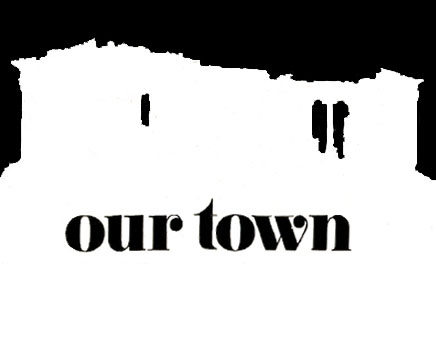
Last year during the Gulf Crisis a bright little Hellinopoula looking at a map projected on the telly exclaimed, “Silly CNN! They’ve put our country up there on the left when everyone knows it’s supposed to be down here on the right.”
True enough. Most maps with a Western Eurocentric bias (and that’s almost all maps) show Greece so squashed into the lower right-hand corner of Europe that Rhodes, and even Crete, sometimes have to be placed in an inset. It is particularly ironic with the latter, since it was in Crete that Europa herself initiated rape charges against a member of a very prominent family living in a compound on Mount Olympus. That he was disguised as a bull and didn’t know her name is immaterial: she gave her name to the continent.
Maps are political statements, and that Greece is always stuck in a corner nearly means mapmakers don’t live there and major geophysical policies are not formed there. Astronauts, environmentalists and supporters of the Gaia hypothesis have even made a view of the globe political, and how much narrower that political view gets as the world is chopped up into maps and put in atlases. Although we live in a post-imperial period, the meridianal center of the world still passes through that pretty little observatory on a hill behind Greenwich.
The usual map of Europe is the product of conventional thinking, along with its built-in propaganda. It can produce confusion however in the realities of the present world. This came up at last month’s Conference d’Athenes on the Mediterranean. There was a good deal of talk about the ‘rich north1 and the ‘poor south’. The Spaniards, Italians and Greeks, dreaming of more generous EC Integrated Mediterranean Programs, were thinking of themselves as the south. But the North Africans were thinking of them as the north, and they themselves as the south. Of course, in the Mediterranean context, there were right (and let’s admit Moslems generally know geography better than Christians). The misunderstanding is due to maps which draw a bottom line discreetly across the center of the Mediterranean, and Africa might just as well not exist.
In the true map of the Mediterranean, Greece now is upper right looking southeast and southwest. Suddenly, it isn’t western anymore. Yet from the Bavarian regents who led the first regime of independent Greece down to President’s Karamanlis oft-repeated “Greece belongs to the West,” the official policy of every government has been to westernize Greece even if it means beating it over the head. The Greek people have staunchly resisted this pressure, and while the western orientation has its rewards, they have shunned exclusive relationship. Like the young lady whose heart belonged to Daddy, this did not prevent her from playing around with the caddie.
Collective memory going back ages is far wiser than political convenience, and this has always meant that Greece keeps a face looking East. The Byzantine eagle had two heads, one facing East and one West, and was therefore twice as brainy as any other bird.
It should be noted that an official policy of PASOK has not been shredded, and for good reason. This was its opening towards the Near East and the Arab world where much Greek business is done. Greeks have known that world longer, worked with it closer, handled it better, than any other European people.
Combined with a bit of anti-European posturing (who likes constant kowtowing to the West?), the PASOK position was very popular in the 1980s.
Greece is a second-category European country but no one likes to say so, or have it rubbed in (even for the EC perks), or be economically manipulated (even when necessary). It is, however, an absolutely first-rate Near Eastern country.
In all the hoopla over Macedonia, it is well to remember that those beloved fellow-Hellenes, Philip of Macedon and Alexander the Great, didn’t give a fig for Europe and their phalanxes reached the Indus. That is to say, the CNN map during the Gulf Crisis showing Greece at the upper left was the one Alexander carried in his rucksack.
“Among the volcanoes,” as Mr Karamanlis the other day graphically described the ethnic eruptions going on now in the Balkans and farther east, Greece lies at the lower left of the map, while earlier, at the Mediterranean Conference, it was located at the upper right.
The pivotal place of Greece in the world no matter how you look at it. is behind all its glories – and catastrophes. Without inviting jingoism, it might be well if Greeks were to draw and spread out a map with their own country in the center, pin it up on the schoolroom wall and have everyone, young and adult, give it a long, hard look. There is much to beware of- and many opportunities not to be lost, either.
“Oh, East is East and West is West and never, the twain shall meet,” wrote Kipling a century ago, aptly placing an insular next to an imperial view of the world, and finding that the two really didn’t go together. In Greece, however, East is West and the twain have been meeting here for ages. To see it live, just go down to Aeolou Street and look at the Kurdish refugees selling their heirlooms in front of the neoclassical fagade of the National Bank.








